-
Posts
39 -
Joined
-
Last visited
-
Days Won
1
Content Type
Profiles
Forums
Downloads
Gallery
Posts posted by mike_spacex
-
-
I'm drawn into this discussion as I see two interesting parts to this problem:
(1) What design pattern best suits the application?
(2) How can the Batch Editor know which operations are available for a given file set of mixed types?
(2) could easily be accomplished if reflection were available - simply query for the object hierarchy and determine the common set of available methods. Alternatively, reflection-ish behavior can be "faked" by maintaining a look-up table with this information.
But, let's revisit (2) after answering (1). It seems to me that your problem is textbook case for Visitor Pattern. Read up on Gang of Four Visitor Pattern (here or here are satisfactory renditions). Don't get hung up on NI community example here (though it serves as an interesting specific use-case, I think it fails to capture the basic intent).
Then try something like this:
I also attached some java-ish pseudo code to demonstrate the call chain from main, through the composite FileGroup, to the Visitable Objects (your 'File' class structure), to the Visitors (the file operations).
Using this pattern, you may feel like you're duplicating a lot of information from the Visitable classes to the Visitor classes in order to make it available to the client, but on the upside you're avoiding creating a bunch of proxy methods every time you want to extend the available operations set.
Back to (2). For the Batch Editor to "know" the available operations, you can add a 'checkAccept' method alongside every 'accept' method, and a 'checkVisit' method alongside every 'visit' method. The 'checkVisit' methods in the concrete Visitor classes simply return 'TRUE' if they are successfully called. 'checkAccept' methods return the 'checkVisit' result to the client. In this manner, then client can call 'checkAccept' on every File in a FileGroup for every operation (Visitor), to quickly determine (without modifying anything) which operations are available for a selected file set.
One final note, if you do decide to use this approach, it might make sense to enforce "friend" scope to methods in your File structure classes to only allow calls from their corresponding Visitors. This makes it clear that the only public API to your File structure should be the accept (and checkAccept) methods. Though this strengthens the API, it does require extra maintenance as new operations are added.
Maybe there's a better pattern for this application, but this is my gut reaction. Please shoot holes in it as you discover its deficiencies.
-
Paul is right, you need more information to know if there's a better way to structure your hierarchy. From what you told us, any of the following diagrams may be valid:
A Venn Diagram is not a great tool for modeling behavior, but hopefully you see the point: You need to take into consideration all the behavior (and possible future behavior) you may want to incorporate into each state before settling on a design.
One of the great things about the state pattern though is that it's very forgiving. If you do as Paul suggests and separate your implementation from your state methods, then molding it into a new hierarchy or adding or removing states & methods is fairly trivial.
-
My 2 cents, from experience:
Avoid developing your own TCP-connection-managing / messaging architecture!
..when I was talking about polling I didn't mean the server to poll the clients but rather... adds incoming connection requests to an array of connections that is then processed inside a loop continously with a very small TCP Read timeout. Polling is probably the wrong name here.Polling is definitely the right name here, and this kind of scheme proved to be quite messy for me as requirements evolved. I initially thought the only challenge would be dynamically adding and removing connections from the polling loop and efficiently servicing the existing connections. Before long, I had dozens of connections, some required servicing small amounts of data at rapid rates (streaming, essentially), while others were large chunks published infrequently. While the polling loop was busy waiting-then-timing-out for non-critical items, some critical items would experience buffer overflow or weren't being replied to fast enough (my fault for architecting a synchronous system). So I incorporated dynamically configured connection prioritization to scale the time-out value based on assigned priority level. I also modified the algorithm to exclusively service, for brief-periods, connections flagged as potential data-streams when any data would initially arrive from these connections.
This quickly became the most complex single piece of software I had ever written.
Then I began using Shared Variables, and the DSC Module for shared variable value-change event handling. It was a major burden lifted. I realized I had spent weeks developing and tweaking a re-invented wheel and hadn't even come close to having the feature set and flexibility Shared Variables offer.
[whatever]MQ is a great solution if you need to open communications with another programming language. But why take your messages out-and-back-in to LabVIEW environment if you don't need to? Sure, RabbitMQ was easy to install and configure for you... but what about the end user? Complex deployment = more difficult maintenance.
I would only recommend TCP messaging if you need high-speed point-to-point communications, but for publish-subscribe you ought to highly consider Shared Variables + DSC module. If you do go the route of DIY TCP message handling, I recommend lots of up-front design work to take into account the non-homogenous nature of messaging.
-
- Popular Post
- Popular Post
But this is different from the usual arguments for strict typing: the wire is strictly typed.
While I agree 100% with this, I'm still on the fence. If there's a 'type' input, my personal preference is to be explicit and wire it up. But, then again, the fewer replacements I have to make if I change types later, the better. When it comes to remembering to modify the data originator, a broken run arrow in the receiver won't help my brain synapses work any better unfortunately.
So, rather than vote bug or no-bug, I'd rather just push for consistency; Either give me the "magic" everywhere, or none at all. The inconsistency can definitely be cause for confusion:
-
 3
3
-
mje, dave: I was listing those tips for the sake of the newbies who might care to read as you vent your frustration; I realize I'm mostly preaching to the choir here though.
I second the motion that Elijah should do an article on Dependency Management.
-
- Popular Post
- Popular Post
For the Discovery Channel Telescope software, we make extensive use of libraries and classes. We never have this issue when editing classes.
Perhaps what helps make this possible is
1. Programming to an interface, not an implementation: Abstract classes with pure virtual methods separate almost every call layer.
2. For each software component we do development work within several small lvprojs (with few dependencies), then only one large project from which we do builds but typically no development work.
3. Architect to avoid overly-complicated dependencies.
-
 5
5
-
...what they are doing is using a class to formalize an interface, not create an Interface construct.
Dave, Though I like your distinction of interface vs. Interface, I can't find this capitalization difference used elsewhere in programming language lingo. In looking at some examples of State Pattern in various languages, I do notice that care is taken in calling-it-what-it-is: Java and C# examples do implement State as an interface (and refer to it as such), while other language implementations call it an abstract class, and avoid use of the term 'interface' altogether.
I'll try to make this distinction in future discussion, thanks.
-
This thread seems to have diverged into a few distinct topics:
Original thread topic: How to distribute updated "preferences" data to multiple processes.
Ancillary topic 1: Using classes to define configurable data items.
Ancillary topic 2: Using configurable objects within a "configuration editor" (or "preference dialog").
On the original thread topic:
If multiple processes require configuration and these processes operate as some sort of state machine: there is probably a valid state in which editing configuration should be allowed (and disallowed in other states), and there is probably a transition during which configuration should be loaded and cached within that process.
If other processes requiring the configuration are state-less (except maybe init & run), then they probably need to be signaled to re-init (i.e. reload the configuration from disk, DB, or FGV) after it has been edited.
On topic 1:
There's a tradeoff between the beauty of mutable version handling when loading classes serialized to disk and the convenience of human readable/editable files. If you're attempting to maintain multiple deployments & versions, or if requirements are frequently evolving, then it's probably best to just flatten objects to disk. I find it hard to come up with a compelling case otherwise.
On topic 2:
Shane's suggestion is good, "self-displaying objects", but it's easier said than done. How would you handle a configurable object hierarchy, where each child class contributes its own configurable attributes. After the self-display method is running in a subpanel how do you pass in the current configuration to display, how do you signal it to stop then pass out or retrieve the updated configuration? Is each object in charge of it's own disk read/writes or does the top-level config editor handle it all generically?
There are many right answers here of course, it's not "one-size-fits-all". I find that most solutions are either highly extensible but relatively complex to use and non-trivial to implement, or they are simple but rigid and limiting.
For those of you who have a good solution or idea, please describe context in which it is applicable. I know that Paul's solution described above used on the Discovery Channel Telescope works well for state-based systems that are deployed to one location, undergo little to no change to configuration datatypes, and require separate applications to edit and load configurable items.
-
 1
1
-
-
Having tried many of the solutions suggested here (and having authored the doc on the dark side about plugin architecture) I have a few comments based on much time spent wrestling with these issues.
You could include your plugins in the application build as "Always Included" files. This doesn't create much of a plugin framework, but in some cases that is acceptable.
Agreed. Since Chris wants "plugins... able to update independently of the application", this is not an option.
You can make the application build put its dependencies outside the application. Create new destination for a sub directory, then change the dependencies to build to there. Then in your plugin projects (Callee's project) reference these files instead of the original "Shared Class" source. Then when Callee is loaded, it will agree on what all the dependencies are named. This is similar to the solution of creating the shared items as another build, but avoids actually having a separate build step.
You're on the right track here, only it's widely considered poor practice to have anything in source directory have dependencies in builds directory.
You can build the shared items as a separate distribution and have both "Caller" and "Callee" projects reference that build output. This doesn't have to be built as a PPL. It could just be a source distribution, but either way it requires a separate project and build increasing maintenance.
... For items that will be referenced from plugins, you can add them to the project directly (instead of having them just show up in dependencies) and not have them be prefixed.
I tried this once - problem is, you end up with duplicate copies of many things in vi.lib. If you want to develop new plug-in code that links to this common source distribution, you can't drop vi.lib functions from the palette anymore. I tried to work around this with a "build wizard": In development, my plug-in would link to vi.lib and other common code as normal, but as a prebuild step the wizard would check all dependencies against the common code library, exclude these from the plug-in build, and perform relinking. The problem I didn't anticipate, is that new plugins often introduced new common dependencies! So, the wizard actually then had to check the main app and all existing plug-ins, to see if any new common dependencies needed to be moved to the common code library distribution, then I had to rebuild the main app and all affected plug-ins. It was a nightmare, and didn't even satisfy the original intent of decoupling.
Here's the idea, illustrated:
Plugins A & B have shared dependecies x & y with the Main App. Loading plug-ins directly from built app doesn't work. Moving x & y to common directory does work if the main app and plug-ins are linked to this common code distribution.
But, when we introduce plugin C that has shared dependencies with the Main App (code w) or another Plug-in (code z), then those dependencies must be moved to common or else the new plugin (or existing plugins if the new one is loaded first) will be broken. The fix requires moving w and z to common, and rebuilding Main App and Plugin B.
The solution using packed project libraries is a fairly elegant solution to this mess.
Here, the interface is the only common code, built as a packed proj library (to the source directory, and treated as source code). The Main App uses this interface, not directly calling the plugins. The plugins are classes that inherit from a plugin interface class in the built lvlibp (yes, OOP makes this so much simpler). Lvlibp's build all dependencies into their own package using unique namespace. So, although there will be bloat to the program where dependencies are duplicated, the upside is that they can vary independently and not introduce conflicts with other plugins or the Main App.
I'm sure there are other great solutions out there... but this one works for me. Go here for a more thorough step-by-step and example code.
Hope this helps!
-
 1
1
-
-
- Popular Post
- Popular Post
Thanks to Ram Kudukoli (of NI R&D) for sharing this with us at the recent CLA Summit:
If Façade is not executing fast enough to keep up with data updates, it causes the updates to queue up. The updates will happen even after the VI stops running. To reduce data updates:
- Open the Xcontrol .xctl file in a text editor like Notepad.
- Add the bolded line shown below:
<Property Name="NI.Lib.Version" Type="Str">1.0.0.0</Property>
<Property Name="NI.XClass.Flags" Type="Int">0</Property>
<Property Name="NI.XCtl.OptimizeDataUpdate" Type="Bool">true</Property>
<Property Name="NI.XItem.DeclaredLeakProof" Type="Bool">false</Property>
- Save the .xctl file.
-
 5
5
-
James, The "unresolved issue" can be fixed as follows:
Change the 'View A' and 'View B' static VI references to NOT strictly typed. In 'SubView Helper.vi', instead of the 'call by reference node', use 'Control Value.Set' invoke node to pass the 'Shutdown Event' then run it with 'Run VI' invoke node with 'Wait Until Done' set to TRUE.
By not requiring a strict VI reference to the 'Launch SubView' VI, you also gain some flexilbity in what VI's could be used since there's no more tie to terminal pane configuration.
-
Thanks G Systems! Count me in.
-
That’s what I thought, but AQ stated:
Wow! I'd have to see it to believe it. If anyone knows how to get a LvClass refnum to a LabVIEW Class that's loaded in the run-time environment, please post solution here! Properties and invoke methods using LvClass refnum are indeed slow, but I'd be willing to take the hit on first-call then store the serialized default value for use on subsequent calls.
-
From my understanding, LVClass refnums could not possibly work in run-time environment. A LVClass refnum is a reference to a ProjectItem. The project doesn't exist in run-time so how could this possibly work. Help clearly states for LVClass.Open invoke method 'Available in the LabVIEW Run-Time Engine: No'.
Therefore, the basic information needed to grow our own XML Serialization routine is unavailable in run-time. I think sufficient information would be class version and parent class name. These are available through the flatten-to-string (or xml) methods ONLY if the object is not of default value. I've attempted what drjdpowell suggests above: 'one could make a VI that flattens an object, and then fills in the missing default pieces', but I can't find a way to assemble missing pieces without these vital bits of information.
-
It's neat and clean that you took the event structure out of the preference dialog page VI, BUT now how would one add functionaly to their preferences VI. As an example, I'd like a drop down box to select a category, then a second drop down box to dynamically modify its items accordingly. Another example: Browse for path to csv file, which populates a table of numbers (in this case, it's only the data in the table that I care to store to file, not the path, since I don't want to perform the file access later). Does this framework allow such behavior?
<update>
You already answered my question above I think where you said 'Also I envisage that you could run the Engine in parallel with other code'. I see now that it's possible.
-
Unfortunately, NI Tech Support was dead wrong when they said, "Unfortunately you cannot use file paths that are inside build specifications (e.g. exes, dll, lvlibps)". I'm surprised you didn't jump back at them, since you had just proven that you can, in fact, use file paths inside lvlibp; You did it for Child 1 and Child 3 classes.
It will actually work for Child 2 in your code if you form the path to the lvclass like this "Loading Plugins\Child Library\Child 2.lvlibp\Child 2\Child 2.lvclass"
The reason for this is that Child 2 depends on your CommonLibrary.lvlib. When LabVIEW builds this into a packed project library, it retains the disk hierarchy inside the lvlibp so relative paths between your code and any of it's dependencies remain intact. I'm not sure where it puts vi.lib stuff though, you'd have to ask NI about that.
Thankfully, LabVIEW helps us out with this issue! Drill down in the tools pallette to 'File I/O>>Advanced File Functions>>Packed Library' and you'll find some helpful VI's (two of them in labview 2010, and one extra new one in 2011). The new function 'Get Exported File Path' in LabVIEW 2011 is precisely what you need in this situation. Wire the qualified name to it (like "Child 2.lvlibp:Child 2.lvclass") and it outputs the path to that file within the lvlibp. In 2010 you'd have to get the whole list of exported files and paths and search for the one you want. If you wire this path to 'Get LV Class Default Value' you won't get error code 7 anymore.
I plan on revising the code and presentation I published in NI Community/Large App Development to explain all this.
I find this method far superior to source distribution for a plug-in architecture because source dist. inevitable results in nasty name-conflicts plus gives you a big messy load of source files that must be carried around with your build application... yuk!
-
 1
1
-
-
The pluginArchitecture.zip posted by Paul earlier in this thread belongs to me; and I admit, I botched it. I recently fixed it up and created a step-by-step presentation on how it is done. Find it all here: https://decibel.ni.com/content/docs/DOC-19176
-
 1
1
-
-
Great discussion. I played around with these ideas a while back and... well... it was a toss up. I attached to this post my xcontrol in both forms. The xcontrol data type is the User Event in the original implementation, and it's the registered event in the alternative design. Pros and cons are as you say, but I find the impact on useability of either design to be minimal. I like your general rule 'delete what you created, leave what you received', though I feel very ackward doing NOTHING with my dynamic registration refnum out of the event structure. This is why in my alternative design I do actually unregister for events in the owning VI -- knowing full well that if I use the registered event in multiple processes I ought to rendezvous prior to unregister.
Sorry, you can't open both xctl's (or examples) simultaneously due to name conflicts. Perhaps I'll fix that and repost.
-
Name: XNode Wrapper
Submitter: LAVA 1.0 Content
Submitted: 03 Jul 2009
Category: XNodes
LabVIEW Version: 8.0
Version: 1.0.0
License Type: GNU Public
Potentially make this available on the VI Package Network?: Undecided
Copyright © 2006, Mike Lacasse
All rights reserved.
Author:
Mike Lacasse
--see readme file for contact information
Description::
To use this VI: Put it in the same directory as the VI you want to "wrap" and rename this VI to ";Dxxx_targetVI.vi" where 'xxx' can be anything, and 'targetVI' is the name of the VI you want to "wrap". The target VI must have a 'type' input terminal and a 'data' output terminal (these can be wired anywhere on the connector pane).
Now you can drop this VI on block diagrams instead of your target VI. The 'data' output terminal will conform to be whatever datatype is wired to the 'type' input. Your target VI will still appear in the VI Hierarchy as a subVI. Double-clicking this node on the block diagram will open the target VI..
This is accomplished within the xnode by altering the terminal specifications and by typecasting the output data from the target VI to the datatype wired to the 'type' input.
Much of this implementation was done in LabVIEW 7.1 using VI scripting which is available by adding the following lines to LabVIEW.ini:
SuperPrivateScriptingFeatureVisible=True
SuperSecretPrivateSpecialStuff=True
Here's the disclaimer:
DO NOT contact NI for support on VI Scripting.
DO NOT use these features for released code or applications to your customers.
DO NOT count on the implementation to stay the same for future releases of LV. It will change and your code will not be upgradable.
The code is pretty well commented. White text boxes describe how the xnode functions. Yellow text boxes are implementation details.
Thanks to Adam Rofer for the XNode documentation available at
Known issues/bugs:
- In LabVIEW 8, the VI description doesn't update correctly from the target VI. It works in LV7.1 to get the target VI's description to show up in the context help window, but not in 8. Not sure why.
- Terminal Labels don't appear in context help window. The icon image of the subVI is succesfully copied, but not the terminal labels. This would be a nice fix. 'Get Conpane Image' gets what I want from the target VI but there is no 'Set Conpane Image'.
- Is there any way not to require ';Dxxx_' in the VI name, but still have it work right?
- If the target VI is not executable, the errors list only says 'External Node: Code could not be generated correctly for this VI'. Thats not very helpful.
- Still working on finding a way to automatically rescript the xnode when changes are made to the target VI. This would be nice so if a control or indicator name is changed on the target, the terminals on the xnode will be renamed accordingly.
Version History:
1.0.0:
Initial release of the code.
-
Greetings.
We're looking for a Certified LabVIEW Architect with Object Oriented Programming experience in large-scale projects to perform a software peer review. Despite the fact that we're well into the software lifecycle, we could still benefit from advice on prioritizing or possibly re-directing our efforts to make an easily maintainable and extendable product. For starters, I'd like to see how many applicants I get with the following REQUIRED qualifications:
CLA with 5+ years Lead Developer Experience
OOP Experience using Endevo GOOP
Successfully deployed plug-in style applications
Software Peer Review / Auditing experience
Available to perform audit sometime in the next 3 months
This contract job will require reading (really reading -- not just skimming) 100+ pages software documentation, visiting our facility in Charlottesville VA to sit through some software presentations/demonstrations, ask prying questions about our code development practices and processes, prepare & deliver a formal review document with praises, concerns, suggestions, etc. to help direct our future efforts.
Don't post your response here; Send your resume to mlacasse@nrao.edu. ONLY APPLY IF YOU MEET THE ABOVE REQUIREMENTS. I'll announce the relaxed required qualifications on this forum topic if I don't get a good pool of applicants soon.
-
QUOTE (crelf @ Jan 22 2009, 12:59 PM)
... stuff that hasn't made it to NI-Labs yet might be less mature that the code on NI-Labs, but they're both in the same category as far as I'm concerned: unreleased.I think we interpret NI Labs differently. When I read "aren't quite ready for release" and I see a list of "graduates" along the side of the page, I'm led to believe NI Labs stuff will soon (maybe less than one year) be available. Judging from the discussions on the NI Labs forums, there doesn't appear to be much product evolution taking place. This could mean people aren't using NI Labs, or people are not giving feedback, or the product is fairly mature and people are happy.
The question you pose, "Is LabVIEW Scripting mature enough for public consumption?", is for NI to answer. Most of the features I've used have been stable since I started using them in LabVIEW 7.1. I'm thinking that NI hasn't publicly made scripting available either because they are still planning on some major revamping, or (as suggested in some previous posts in this thread) they are keeping some sort of upper-hand over possible competition by keeping it in-house. Or maybe they're just pleasantly amused watching us 'easter egg hunt' with each new release!
-
I said earlier that I don't think scripting "fits the bill" for NI Labs for the same reason LV_FPGA_SE stated:
QUOTE (LV_FPGA_SE @ Jan 21 2009, 10:55 AM)
making something available on NI Labs can and does create certain expectationsIf a LabVIEW version upgrade suddenly breaks all my xNodes or scripting code, my supervisor (who knows very little about LabVIEW) would flip out when he discovers I was using an unsupported technology. I only want stuff on Labs that truely is nearly ready for release so I can confidently use it knowing there's little risk that, down the road, major refactoring of my code will be necessary. If NI is prepared (or nearly prepared) and equipped to support most functionality made available through scripting, including auto-update of deprecated properties and methods, then I think Labs is in fact a good place for it. If not, wise advice would be - keep it in your pants if you're not ready for that sort of commitment. Perhaps I'm being too pessimistic about the maturity of scripting and NI's readiness to support it.
-
Scripting wouldn't be as much fun if it were "legal", am I right? Even for those of you who don't (yet) inhale, isn't it great just to get a little taste of scripting knowing that "the man" doesn't want you to? If not, well, hang around these forums long enough and the peer pressure is sure to get the best of you. Perhaps it should just be legalized for medicinal purposes -- to help take the edge off those long boring days at work for the rogue programmer.
Analogies aside, NI Labs is a place that "showcases the evolving technologies from NI R&D engineers that aren't quite ready for release". First, let's assume "aren't quite ready for release" refers to the technologies, not the R&D engineers. Second, I don't think scripting fits the bill. Besides, NI is probably thinking, "Legalize scripting!? What are they gonna ask for next, opening LabVIEW source code?!" We really would need Obama for that one.
I guess what I'm saying is, I don't think it'll happen. BUT, if it does, wouldn't it be great if NI still required us to type in 'SuperSecretPrivateSpecialStuff', that way I can still feel like an evil genius!
-



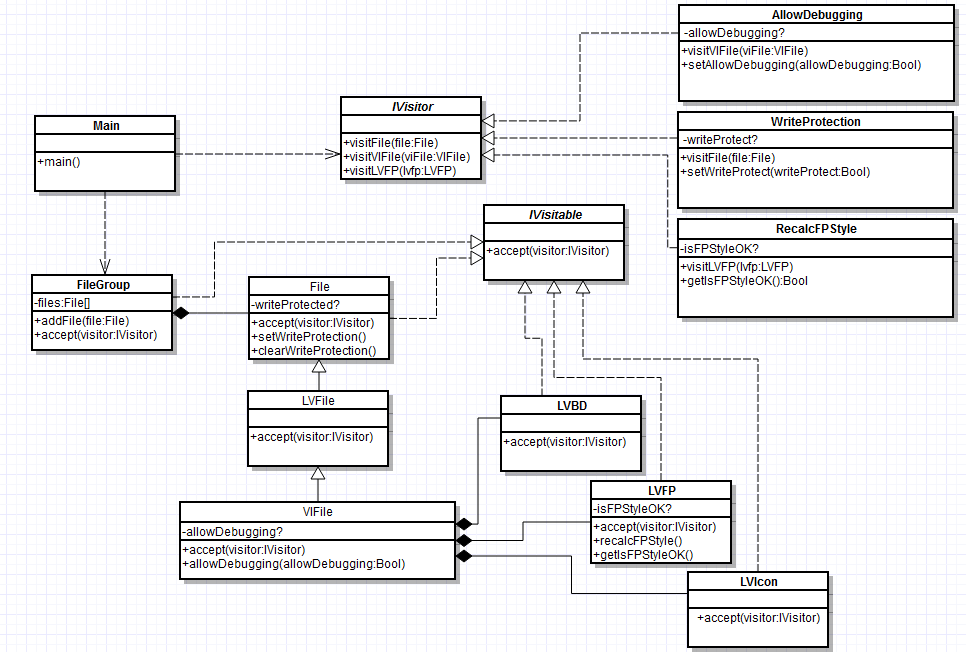
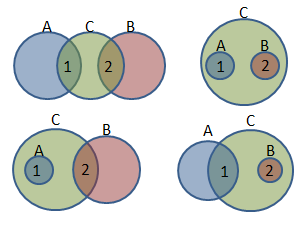
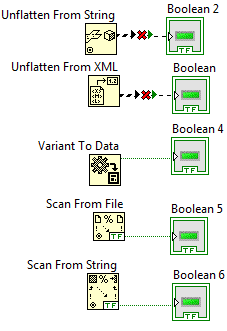
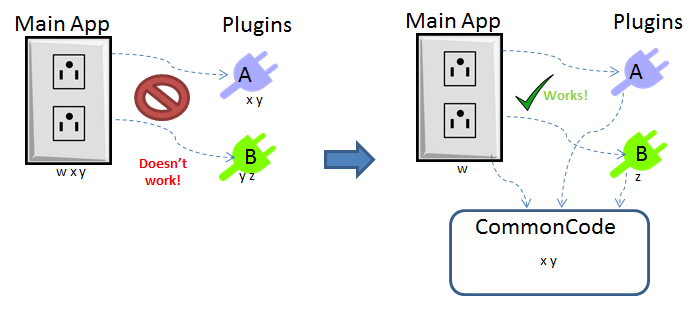
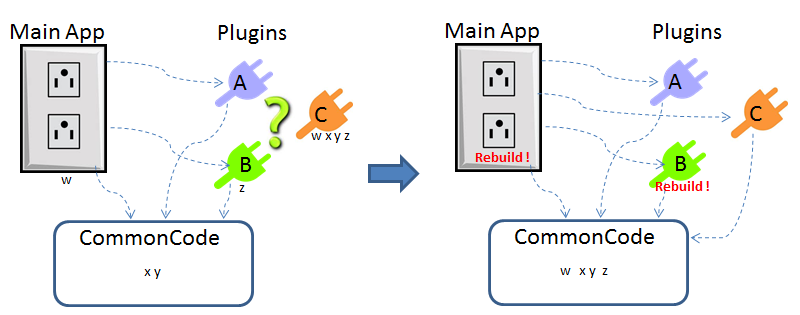
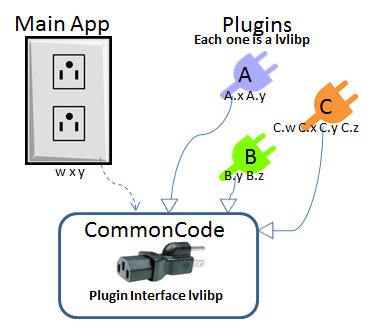
Preferred UML Tool
in Object-Oriented Programming
Posted
Here's news worth sharing: StarUML is not dead!
http://staruml.io/download
They're working on v2 (major new release). They've rolled out 12 beta versions since May 2014. G# plug-in tool seems to work brilliantly with it. I reverse engineered a LabVIEW project with 18 classes, and liked the result much better than what the GOOP Development Suite UML Modeller produced (though I didn't make effort to tweak UML Modeller's reverse engineering settings).
Though the G# add-in helps produce code and reverse engineer, I sure wish it could sync with a project like GDS UML Modeller does. StarUML doesn't have good diagram clean-up utility -- it took me an hour to get all my wires uncrossed and classes neatly laid out. Then, after I modified the code, all I could do was reverse-engineer again then hand-arrange the UML all over again (only 30 minutes 2nd go-round since I had previously worked out a neat arrangement).
I'm still dreaming of the day we have a professional tool like Enterprise Architect with tight linkage to LabVIEW, but for now it's encouraging to see StarUML being brought back to life; it's a useful tool with much lower barrier-to-entry than EA; great for casual users.